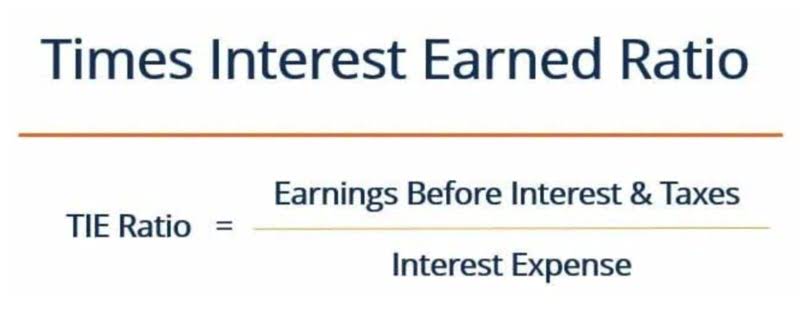
Annual recurring revenue (ARR) is a form of revenue, but it’s not total revenue because it only reflects the money a business receives from subscriptions or contracts that last a year or longer. It doesn’t include other revenue that is irregular or nonrecurring as a result of one-time sales. A business’s total revenue comes from both recurring and nonrecurring sources.
- By tracking revenue fluctuations with the help of ARR, you can strategize product development and refine sales and marketing plans as you move forward.
- Be careful not to confuse ARR with cash flow, which includes all cash transactions.
- It’s designed to give you a clear picture of the predictable revenue your business earns annually from customers.
- If we add $88,000 to the beginning ARR, we calculate the ending ARR in February of $4,128,000.
- If you sell your product via a monthly subscription model, you can use a similar formula to the one above, then multiply the monthly number by 12.
- Revenue can consist of one-time sales or a stream of expected periodic sales.
Differences in How Bookings and ARR are Tracked and Utilized in a Service-based Business

It allows them to plan for the future, invest in growth, and weather economic storms with confidence. A subscription business receives routine payments from regular customers in contrast to revenue from one-off sales. Executives rely on ARR’s high degree of annual recurring revenue predictability for making decisions about spending, budgeting, and expansion.
- Both are important metrics and are often leveraged equally by subscription businesses.
- And because it provides predictable revenue, you can adapt your pricing strategy to maximize your ROI.
- And they track changes in your ARR to show how it grows and contracts in real-time.
- While both metrics offer valuable insights into your company’s financial health and future growth, distinguishing between them is vital for accurate financial planning and strategy development.
ARR = (New ARR) + (Expansion ARR) – (Contraction ARR) – (Churned ARR)
Fincome is SOC 2 Type I certified, ensuring a high level of data security and protection.Your data is collected exclusively via read-only APIs and hosted on secure servers located in France. We never share your data with third parties without your consent.For a detailed review of our security practices, please visit our dedicated security page. Receive exclusive SaaS leader interviews and webinars every month, along with our in-depth analyses of the latest SaaS trends, with Fincome Pulse.

Annual Recurring Revenue Vs. Topline Revenue
Improving ARR means looking deeply into retention and operational efficiency strategies. By collaborating with QuickBooks Accountant the sales, marketing, and customer success team, you gain a sense of the “why” behind the numbers. It’s useful for tracking short-term momentum—month to month or quarter to quarter. MRR is especially helpful for teams looking to tie revenue performance back to operational levers, like sales cycles, marketing campaigns, or customer experience initiatives. But depending on your billing structure, ARR may come in lower—especially if you have shorter contract terms or experience higher monthly churn. The longer customers stay with your business, the more they contribute to your ARR.
- On the other hand, churn reflects the rate at which customers leave your service, directly impacting ARR by reducing reoccurring income.
- Conversely, overlooking the expansion or contraction within your customer base can skew ARR figures, leading to overly optimistic revenue forecasts.
- However, there doesn’t seem to be an appreciable change in the net new MRR, as churn and downgrades have also increased.
- We need to differentiate between the two because subscription businesses typically have a mix of one-time and recurring revenue.
- But total revenue was $11 million, with $1 million in sales to one-time customers.
- For example, if a company expects to receive $1,000 in recurring revenue per month, their ARR would be $12,000 (1,000 x 12).
ARR and MRR complement each other, offering a comprehensive picture of both short-term progress and long-term growth potential. MRR, on the other hand, offers a more immediate snapshot of business performance, helping companies monitor monthly revenue fluctuations, seasonal trends, or the impact of marketing campaigns. Since ARR is focused solely on predictable, recurring revenues, incorporating these items can distort the accurate income summary picture of your finance and lead to inaccurate projections. A clear understanding of future income streams allows you to strategically invest in areas like product development, marketing, or expanding your team.

It considers the annual value of all active subscriptions, excluding one-time fees or non-recurring revenue. This metric offers a clear picture of a company’s revenue stream, particularly useful for subscription-based businesses. ARR focuses specifically on subscription-based revenue and provides insight into the predictability and sustainability of a subscription business model. At the same time, revenue encompasses all company income sources, including one-time sales, services, and other non-recurring revenue streams. On the other side, the revenue run rate is a projection of the annual revenue based on the current pace of revenue generation. This means the metric allows you to project for future revenue, allowing you to build your business plans.

Contracts eventually end, and company fortunes and market strength can fluctuate over time as consumer habits change and new competitors enter the market. Annual Contract Value (ACV) is a financial metric used to measure the value of a customer contract on an annual basis. It represents the average annual revenue a single contract generates over its lifetime. Operating on a subscription pricing model for more than 20 years has given us the opportunity to face and overcome the practical pain points of subscription businesses. Non-recurring add-ons, like one-time purchases or occasional upgrades, do not contribute to the regular, predictable income stream.
Key Differences Between Bookings and ARR
It offers information about the company’s growth trajectory, stability of revenue streams, and financial health. Simple math is required to calculate ARR, but precise information about subscription costs and client retention rates is needed. It’s the predictable income you generate year after year through subscriptions, maintenance fees, or other recurring revenue sources. For SaaS companies or membership-based businesses, a healthy ARR provides stability and long-term financial security.


